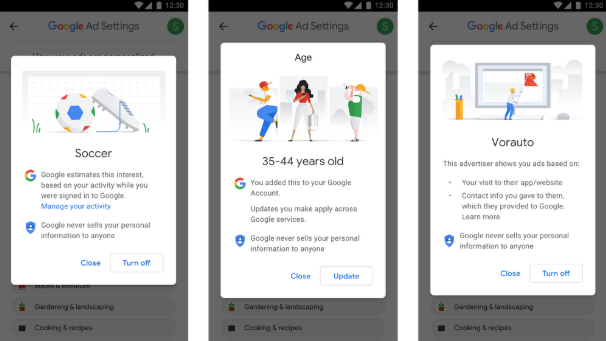Google’s new Ad Settings tool is a positive step for the digital marketing industry
With ad transparency a hotter topic than ever before, G Squared’s Olivia Setiawati dissects what the changes mean for digital marketers.
Ah, ad tailoring. We meet again.
Since 2009, Google has maintained a central dashboard for users to find out more about the ads they were been served. This was an effort to dispel any privacy concerns about its advertising model. For the most part, they’ve been fairly successful in the space with the ability to mute non-relevant ads, offer basic information about why you are seeing a particular ad and other useful content made readily available to each user.
Welcome to Google’s new ad setting tool
In light of recent GDPR compliance regulations, Google has worked to further step up ad transparency for both its advertisers and users. The search giant announced it had launched updates to its Ad Settings tool, making it even easier for users to understand why particular ads are being served to them. The new Ad Settings tool displays numerous factors that have contributed to why the user has been served a specific ad.

This is all centred around their new feature – ‘Why this ad?’. This information box will sit tucked beside all of their ad units and provide tile-based contextual information that displays the numerous triggers that tie the user with the ad served. Users are then given the power to seamlessly make edits or alterations should they feel the information is incorrect or inaccurate.
What does this mean for advertisers and users?
This brings us to the big question. Is this the solution that will ultimately enable users to trust Google and marketers by allowing them to opt-in to be served relevant ads?
Overall, it’s positive news for both advertisers and users. Users receive far more transparency on the ads that are been served at the click of a button, and in a neat tile format, while advertisers will likely benefit from more accurate campaign targeting because of this seamless new ability to receive feedback.
A new age of transparency within digital advertising
It’s important to understand that ad transparency is not a new topic – rather, it’s something we find increasingly present in today’s digital conversations. Google has often led the way in providing information on the nature of their ad targeting and, in that regard, another important question arises – has Google now set the benchmark for ease of accessing such ad information and attracting quick user feedback? Will Facebook and the likes now follow by adding easier access to transparent targeting information on sponsored content? We’ll have to wait and see.
Although, something to consider is the use of ad blockers and Google Chrome’s incognito mode to block cookie-based targeting which prevents the likes of Google from building an accurate customer view.
Hopefully through the added accountability of ad tailoring, people will not see the need to use ad blockers as browsing experiences with ads become more tailored and personalised. Ultimately, it is one of Google’s central core missions to enhance customer and user experience by serving relevant information and personalised ads.
How this applies to digital marketers
From an agency standpoint, we’d certainly love to see deeper insights included in Google Analytics as a directional correlation to this new introduction. Ultimately, we’d like to see segments based on in-market segments and custom affinities, and not just extrapolation of skewed data which is what we’re seeing now.
There’s still some way to go in creating the ideal personalised digital experience. To this end, would the growth in specific interests impact how the advertisers target their audience? How often will the new interest ad settings will be updated for marketers to make better use of?
We will watch closely to see if this moves the needle in terms of ad uptake, if other platforms follow suit and if Google will release information on the use of this new function.
But overall, it’s good to see ad transparency being taken seriously.
Olivia Setiawati is a senior performance manager at digital agency G Squared.


If I had a penny everytime an agency person says ‘skewed data’ without actually understanding how to work out any skewness.